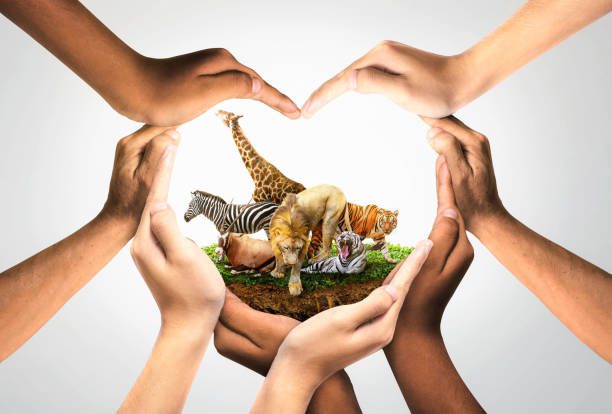Contents
- 1 Human-Wildlife Conflict (HWC)
- 2 The Challenge of Human-Wildlife Conflict
- 3 Pathways to Human-Wildlife Conflict Mitigation
- 4 Socio-Economic Dimensions
- 5 Toward Sustainable Coexistence
- 6 Building Capacity for Lasting Impact
- 7 Interesting Fact
- 8 Conclusion
- 9 FAQs
- 9.1 Q1: What is WILD-HARMONY’s main objective?
- 9.2 Q2: Which innovations does the project use to reduce Human-Wildlife Conflict?
- 9.3 Q3: How does climate change influence Human-Wildlife Conflict (HWC)?
- 9.4 Q4: Who benefits from WILD-HARMONY?
- 9.5 Q5: How can participants in the IRES course apply this knowledge?
Human-Wildlife Conflict (HWC)
Human-wildlife conflict (HWC) is increasingly recognized as one of the most urgent and multifaceted challenges in conservation and rural development. As human populations expand, agricultural frontiers push deeper into natural habitats, and climate variability intensifies, encounters between people and wildlife have become more frequent, more severe, and more consequential.


Consequently, communities living at the margins of protected areas bear disproportionate costs, while wildlife populations face mounting threats. Indeed, the International Union for Conservation of Nature (IUCN, 2023) has identified HWC as one of the greatest risks to both biodiversity and rural livelihoods.
The Challenge of Human-Wildlife Conflict
Across Africa, the manifestations of HWC are diverse, yet interconnected (Aceeca):
-
Elephants often raid crops such as maize, sorghum, or bananas, creating significant food security risks for smallholder farmers.
-
In pastoralist regions, lions, leopards, and hyenas prey on livestock, leading to heavy economic losses and fueling retaliatory killings of predators.


-
At the community level, the burden falls disproportionately on women and children, who spend long hours guarding fields or herding animals away from high-risk zones, reducing school attendance and limiting other livelihood opportunities.
-
From a conservation perspective, such conflicts undermine trust, with communities increasingly viewing wildlife as a liability rather than a shared resource.
Pathways to Human-Wildlife Conflict Mitigation
No single approach can fully resolve HWC; successful strategies depend on layered, context-specific solutions.
-
Traditional barriers, including fences or trenches, remain important for localized defense; however, their effectiveness increases when paired with innovative tools.
-
Technological innovations, such as solar-powered fences, chili-based deterrents, or drones, now complement traditional measures with greater precision and scalability.
-
Early-warning systems, supported by GPS collars and mobile alerts, allow communities to anticipate animal movements and safeguard crops and herds in advance.
-
Crucially, community ownership ensures sustainability, since interventions co-designed and maintained locally endure far longer than externally imposed measures.


Socio-Economic Dimensions
The consequences of HWC extend well beyond the immediate destruction of crops or livestock. Economically, repeated losses weaken household resilience and discourage farmers from investing in conservation-linked ventures such as eco-tourism.
Socially, constant fear of wildlife encounters strains mental health and fuels tensions between local communities and protected area authorities. Additionally, gender disparities are magnified: women and children shoulder the heaviest workload in tasks such as crop guarding, water collection, and herd protection (KWS).


Consequently, HWC exacerbates existing vulnerabilities and perpetuates cycles of poverty.
Also Read: Sustainability at the Core of Tomorrow’s Growth
Toward Sustainable Coexistence
Nevertheless, growing evidence shows that coexistence is possible when conservation and community needs are jointly addressed (Study on Human-Wildlife Conflicts in Kenya).
-
Integrated land-use planning reduces overlap between farming areas and wildlife corridors, lowering the likelihood of encounters.
-
Benefit-sharing models, including community conservancies or tourism revenue-sharing schemes, create tangible incentives for protecting wildlife.
-
Collaborative governance, in which local leaders participate directly in decision-making, ensures interventions align with cultural values and economic realities.
Building Capacity for Lasting Impact
At IRES, our Human-Wildlife Conflict Mitigation Techniques Training Course equips professionals with the knowledge and tools to:
-
Design monitoring systems that integrate ecological and social indicators.
-
Apply participatory planning methods that enhance local ownership.
-
Incorporate technological innovations such as drones, GPS tracking, and SMS alerts into mitigation systems.
-
Align interventions with national policies and governance frameworks.
Therefore, by bridging technical innovation with community-centered approaches, the course empowers practitioners to move beyond reactive measures and toward sustainable, proactive strategies for coexistence.
Interesting Fact
In Kenya alone, human-wildlife conflict costs rural communities over KSh 2 billion annually in lost crops and livestock (ACECA, 2023).


Conclusion
Ultimately, human-wildlife conflict will remain a defining conservation challenge for Africa in the decades to come. However, with innovation, inclusive governance, and sustained capacity-building, conflict can be transformed into opportunities for coexistence.
Protecting biodiversity while safeguarding rural livelihoods requires not only technology and infrastructure but also the social skills to engage communities, the foresight to design context-appropriate solutions, and the commitment to foster shared responsibility. In the final analysis, success will depend on building landscapes where both people and wildlife not only survive but thrive together.
FAQs
Q1: What is WILD-HARMONY’s main objective?
A: To integrate conservation, conflict mitigation, and livelihood strategies, aiming to reduce HWC incidents by 60% in targeted Kenyan landscapes (ACECA, 2023).
Q2: Which innovations does the project use to reduce Human-Wildlife Conflict?
A: Predator-proof bomas, beehive fences, chili barriers, early-warning SMS systems, rapid response teams, and habitat restoration.
Q3: How does climate change influence Human-Wildlife Conflict (HWC)?
A: Climate variability intensifies droughts and water scarcity, which push both people and wildlife into closer proximity. WILD-HARMONY responds through habitat restoration and drought-resilient practices.
Q4: Who benefits from WILD-HARMONY?
A: Rural households, small-scale farmers, communities in high-risk areas, and wildlife itself, all gain through reduced losses, improved safety, and stronger conservation outcomes.
Q5: How can participants in the IRES course apply this knowledge?
A: After training, they can map conflict hotspots, implement non-lethal deterrents, mobilize communities, monitor results, and provide evidence-based advice for policy and practice.
I’m a storyteller at heart and a strategist by trade. With over 3 years of experience in digital marketing, content creation, and brand communications, I’ve worked with leading institutions and dynamic brands to shape narratives that resonate. From educational spaces and corporate training to real estate and sustainability, I’ve crafted content that not only speaks but delivers. This blog is my creative space, a reflection of everything I’ve learned (and keep learning) about writing with purpose, building trust, and turning ideas into impact.









Comment here